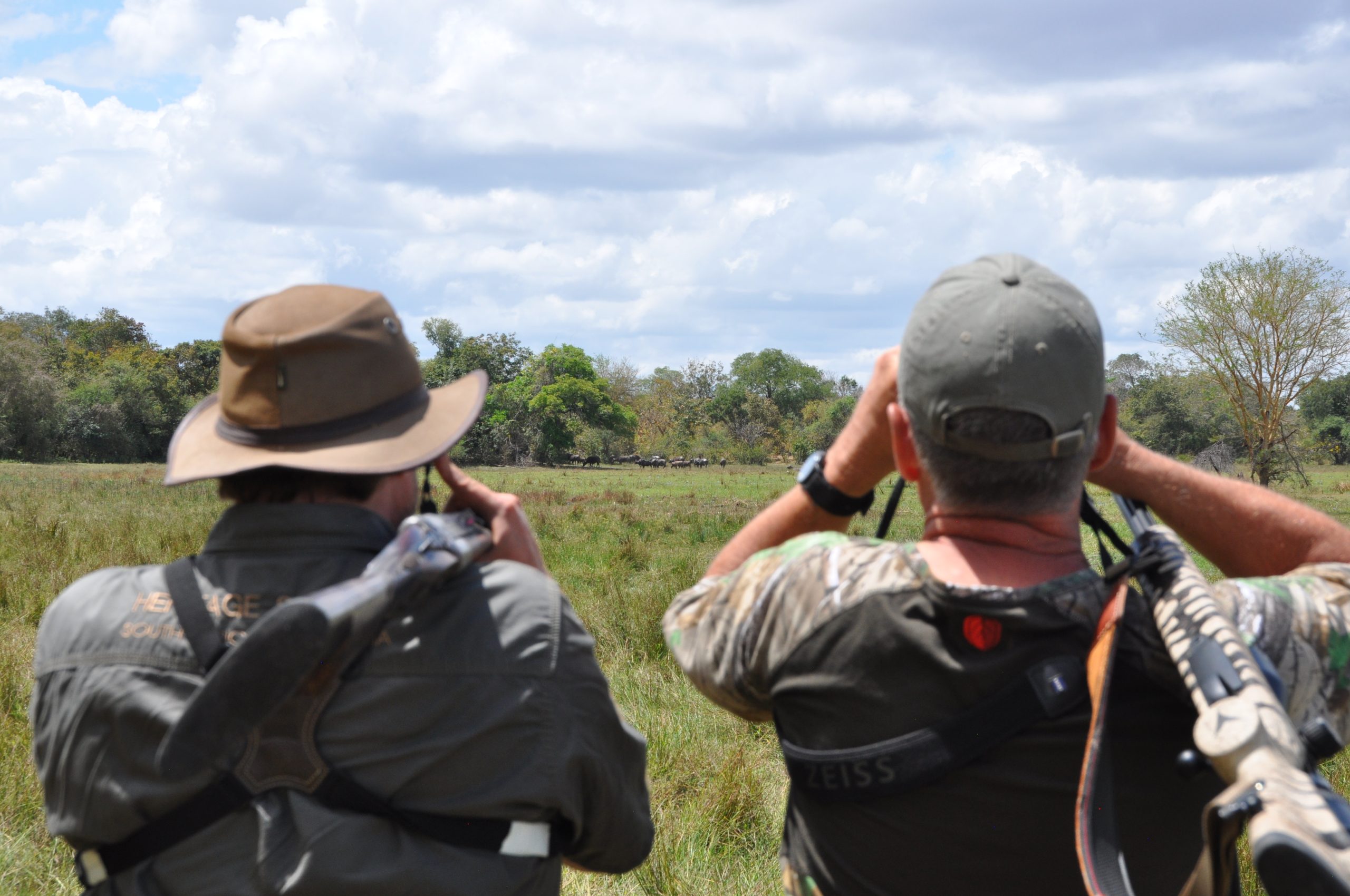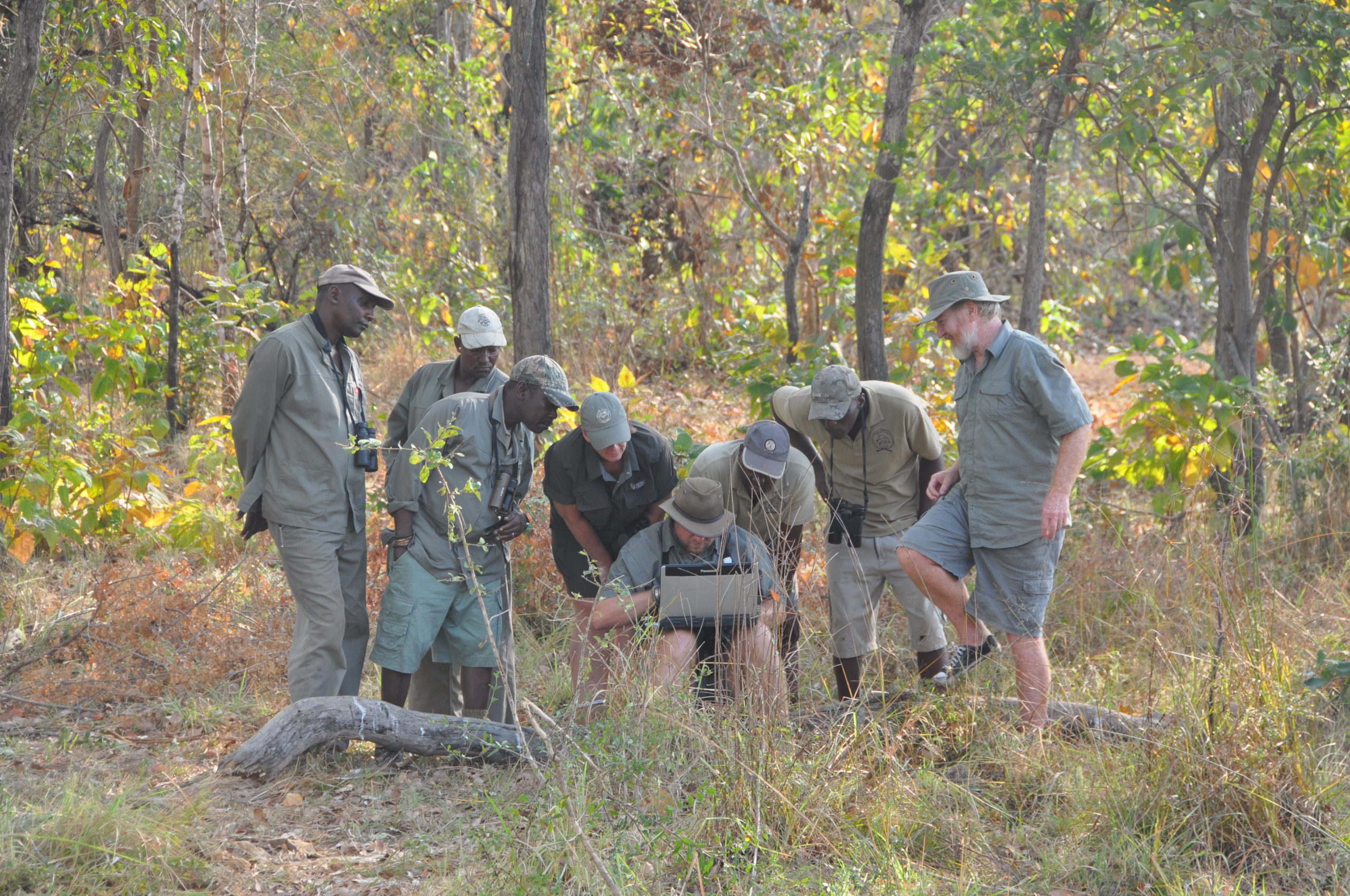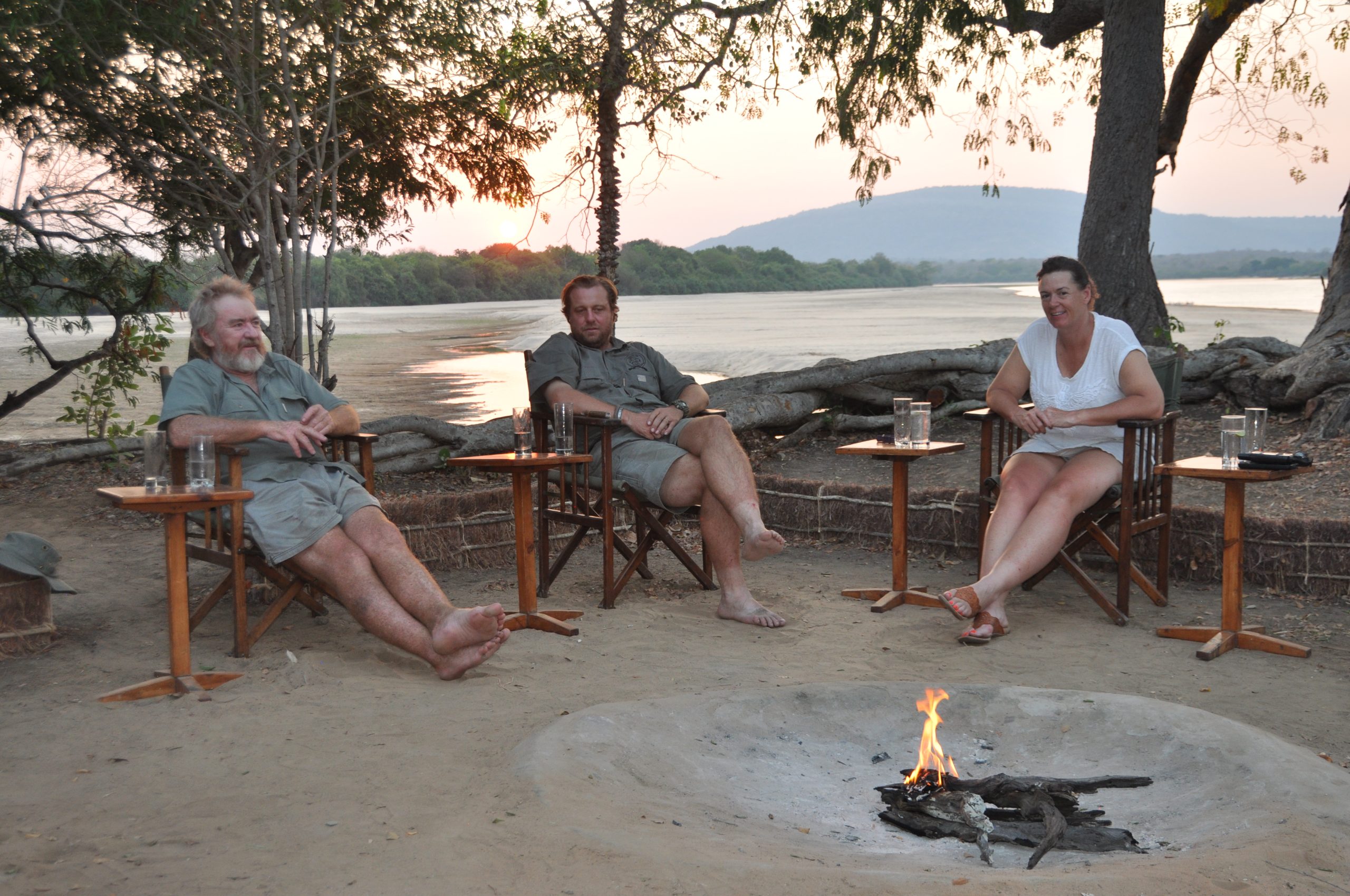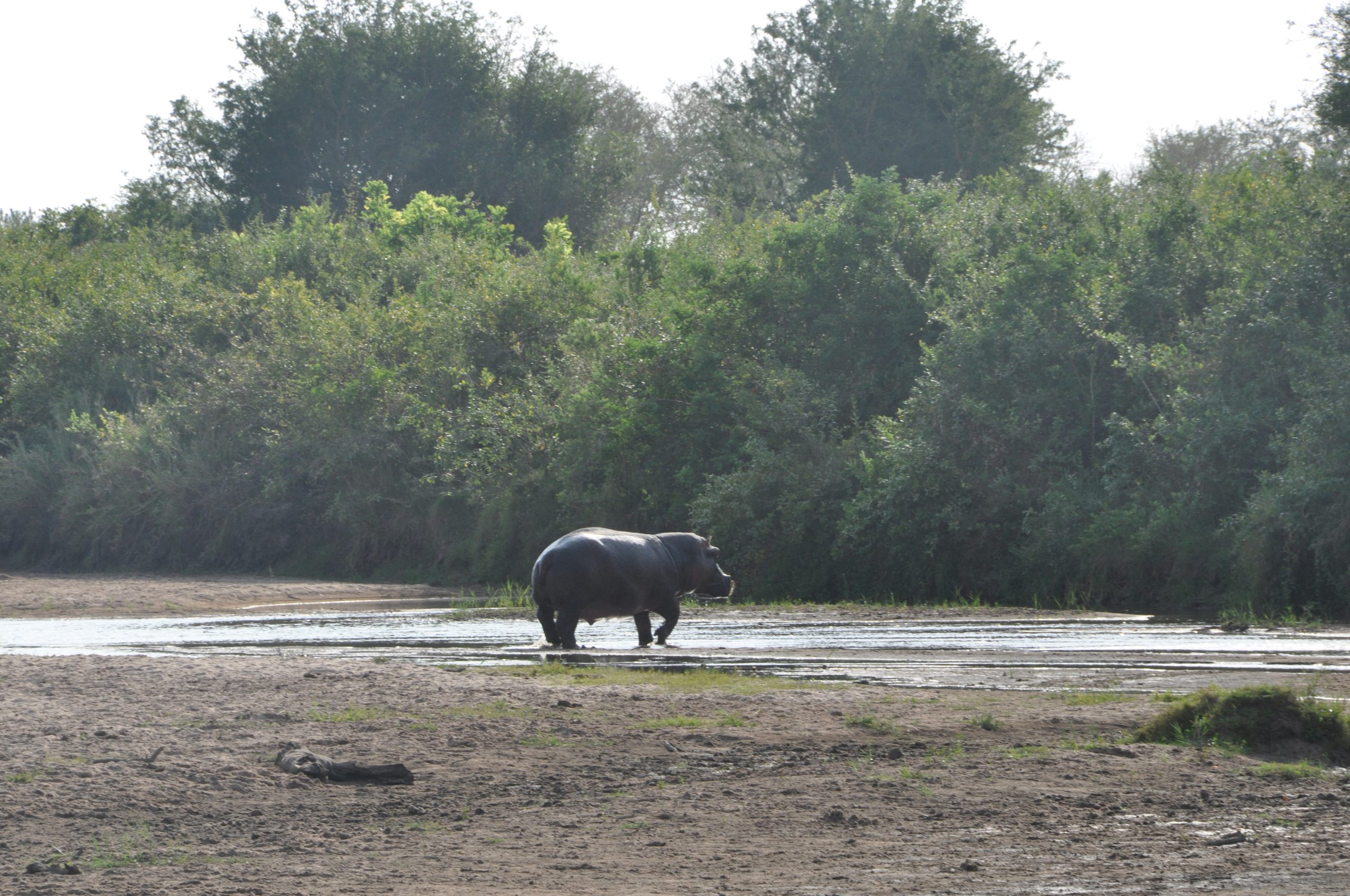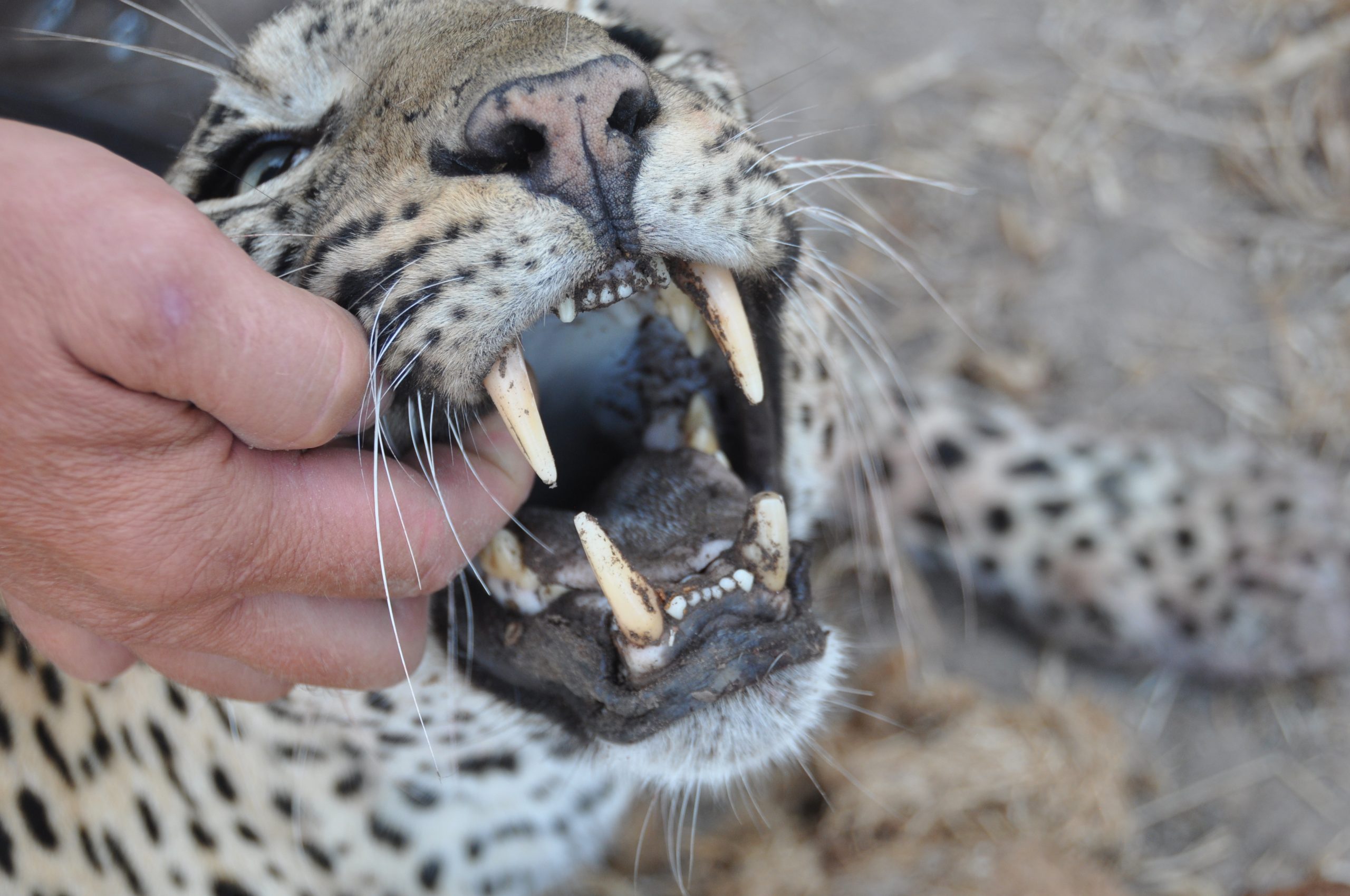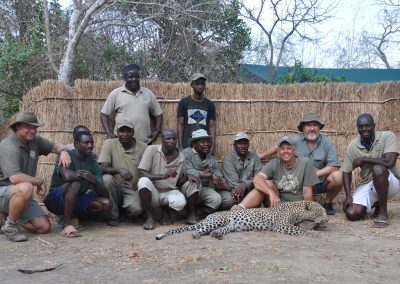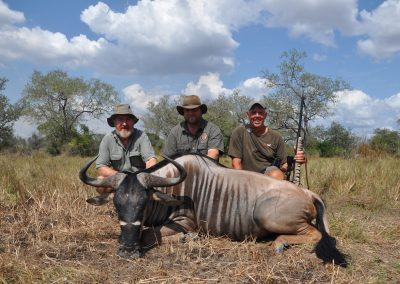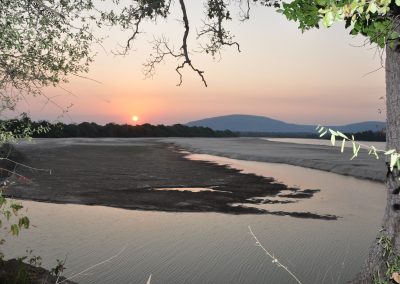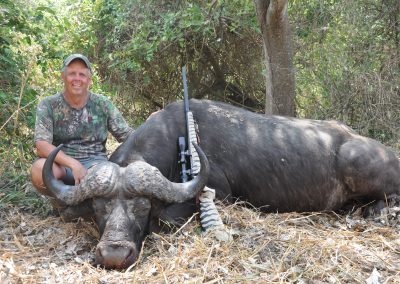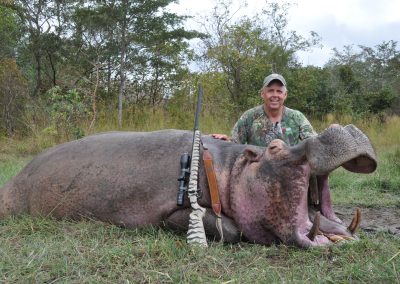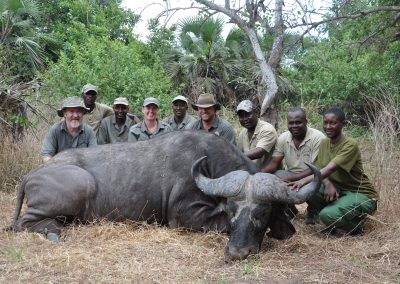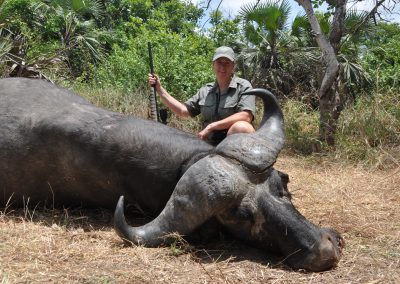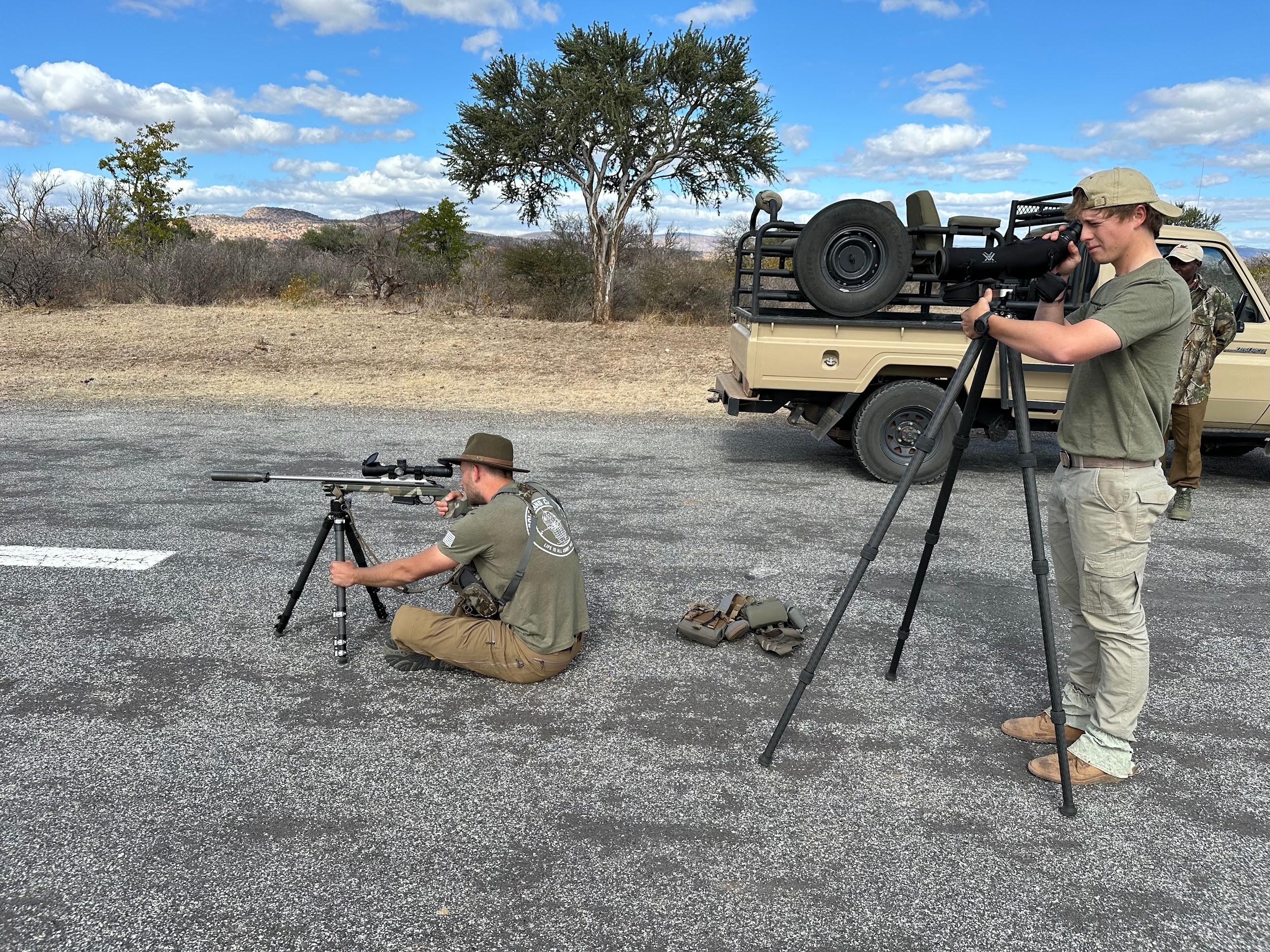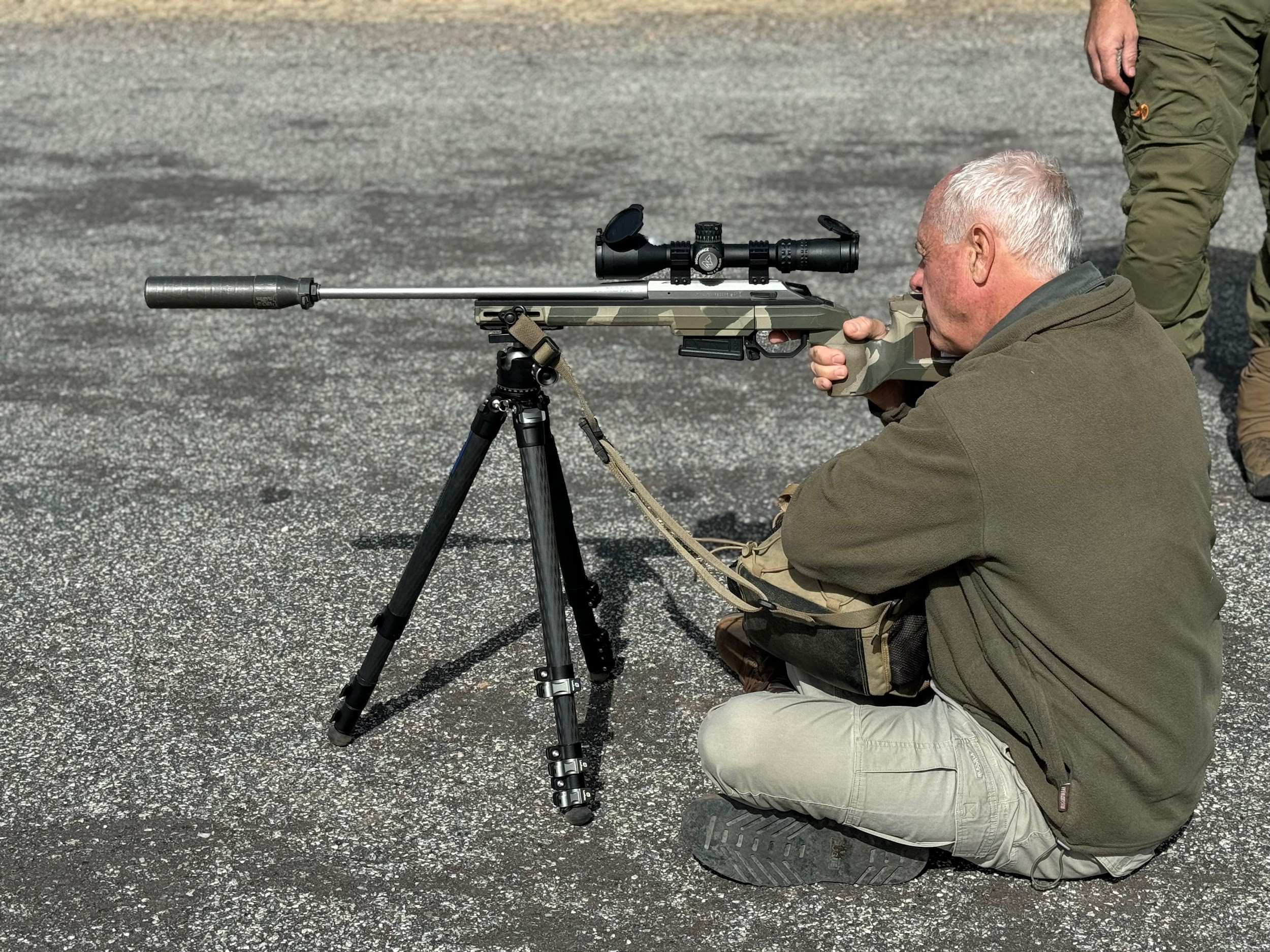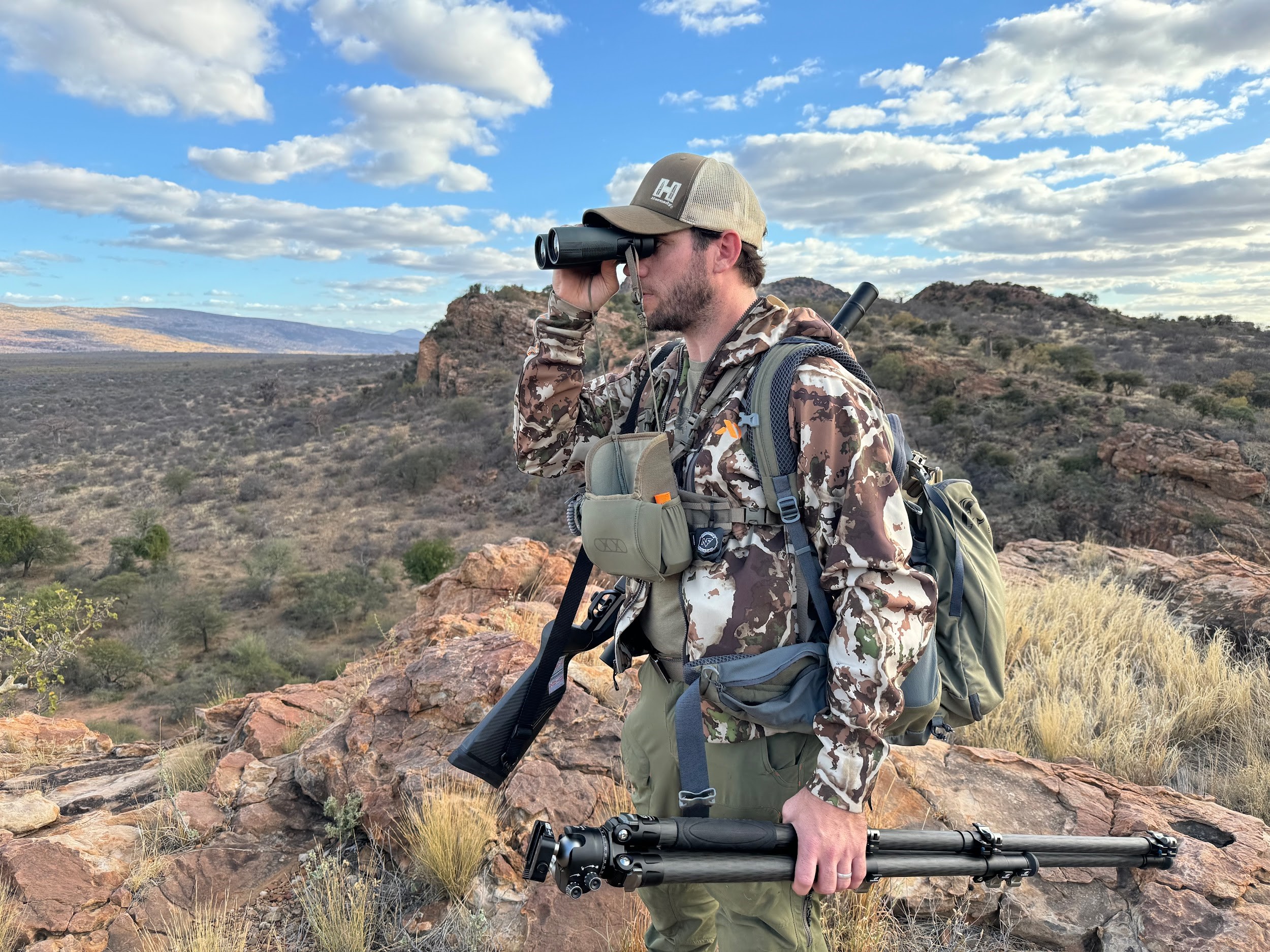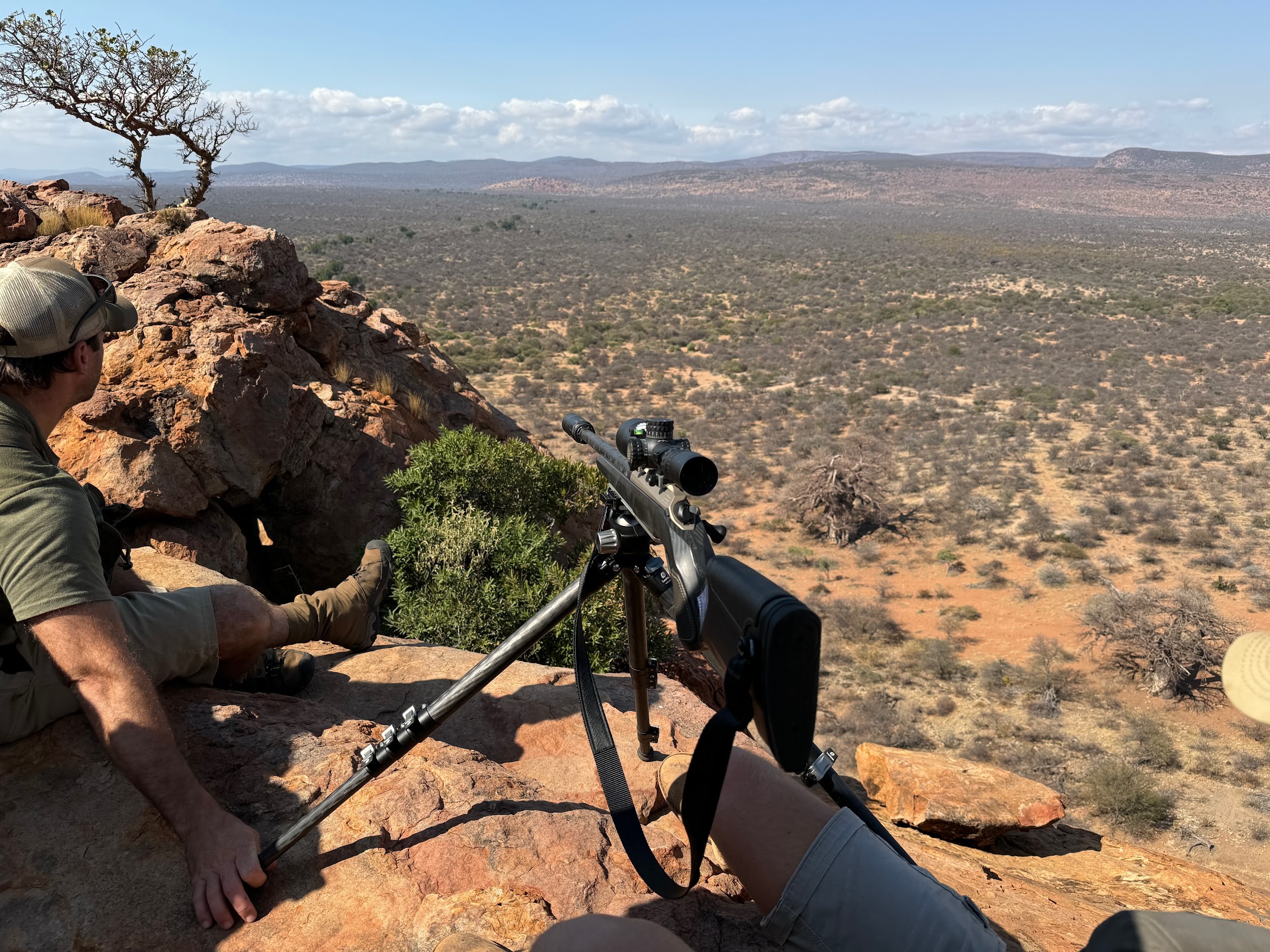Chapter Three
Matobo
Like so many others, I always believed that these amazing formations were the result of bubbling oozing lava that had been squeezed out of the hot bowels of the earth millions of years ago.
But that assumption is wrong. The whole of southern Africa is a single block, a single mass of granite, the stuff which formed the earth’s crust two thousand million years ago.
In many places, like the Matobo hills, other rock ended up on top of the granite mass, and this other rock was prone to weathering.
For two thousand million years nature gradually removed this rock cover, exposing the granite. But nature does not rest. There are no days off, so the granite, in turn, has also been subjected to this relentless weathering. It has been eroded, moulded, cracked, split and sanded. And the amazing shapes and feats of balance that we see today are the result of this unstoppable weathering action.
Not only do these monstrous balancing balls and blocks and stone towers conjure up visions of bubbling lava, they invoke thoughts of mighty earthquakes, ice, floods, cataclysmic volcanic upheavals – it’s difficult to accept that it’s all been created by boring old erosion. But over millions upon millions of years, this has been the cause.
You could stand at Cecil John Rhodes’s “View of the World” or on top of the amphitheatre at Njelele – where the cave of the mlimo hides inside a giant cloven wall, look out into the hills and see a hundred different rockformations. There are basically two types, or class, of hills in the Matobo range. “Whalebacks” and “castle koppies’”
I found an interesting explanation of how these koppies were formed in a book called “The Matopos” written by Sir Robert Tredgold, published in 1956. In that book, Tredgold states that different lines of weakness in the granite, called “joints” are the cause of the different types of hill formations. I quote from his book.
“The difference between them does not lie in any way in the rocks from which they are made, but in the natural weakness, called joints. Which traverse them. All rocks have these lines of weakness, and in granite they take two quite different forms. One kind of jointing consists of practically straight lines in three directions more or less at right angles, two vertical and one horizontal. A feature of the jointing of the Matopos granite is the consistent direction of the vertical sets of joints. One set runs nearly north to south, and the other east to west. This is very clearly seen on aerial photographs or from an aircraft flying over the hills, and these two sets of joints have a profound effect upon the pattern of the rivers which drain the area, on the shapes of the hills, and even on individual boulders.”
This describes the way in which “castle koppies” were formed.
Regarding the “whalebacks”, he had this to say –
The great whalebacks are also joint controlled but on a different pattern. The rectangular joint pattern is still present and fillings of quartz and other types may often be found marking the position of some of them, but their effect is overshadowed by curved joints of large radius like the skin of a gigantic onion, parallel to the surface of the dome. The origin of these curved Joints is by no means clear, but they may have been caused by relief of pressure during the removal by erosion of the overlying load of rock. However this may be, these curved shells separate slightly from the underlying surface and break along the rectangular joints. The loosened blocks slide down the inner skin of the onion and form heaps of jumbled rock round the base of the hills. At times remnants of an outer skin remain as huge rounded boulders on the summit. This is the origin of the boulders which surround Rhodes’ grave. The hill to the north of the grave shows a considerable portion of the outer shell cut up by joints, with weathered blocks beside it. On the precipitous faces below, the edges of out shells can be seen, with a mass of fallen granite blocks at the foot.”
In summing up the geology of the Matobo hills it’s hard to do a better job than Tredgold, so I will borrow one more paragraph from his book.
“No landscape is static, it only appears so by our standard of time. What we see of the Matopos of today is merely a single frame from a long film which began millions of years ago, and will continue for many more. The beginning and end of the film will show much the same scene, an almost level plain, with a few minor hills on it. The two plains will be separated by millions of years in time and several hundred feet in height, but otherwise they would look the same. The action all takes place in the middle part of the film. The rivers deepen and widen their valleys, the great whalebacks emerge. Break down to castles, and then to low mounds. The monotony of the new plain, to which the landscape is tending, appears. It remains until some new uplift rejuvenates the power of the streams, and a new cycle of landscape evolution begins. The sculpture of our Matopos hills began long before men appeared on earth, and it is our good fortune to have come in somewhere in the middle of this continuous performance.”
The People
Whether visiting the Matobo hills for the Bushman paintings, or the scenery, or just a relaxing weekend in the National Park, one inevitably wonders who lived in these secret places? Who was here first? Where did they go? Who came after them?
The Matobo hills are venerated by the African people who are tied to them by history and tradition. Custom dictates that certain hills must not be pointed at for fear of inducing cold, inclement weather or even something far more sinister.
Matobo. Where does that name come from? What does it mean? Elspeth Parry, in her book “A Guide to Rock Art of the Matopo Hills Zimbabwe says this. “Through the years some confusion has arisen over the correct name for the hills, now popularly known as ‘Matopos ‘. However, this is incorrect as the word Matopo, which is used in this book, is already in the plural. The name seems to be a corruption of Matombo the Kalanga word for hills, an alternative corruption, Matobo, is sometimes used.”
Robert Tredgold, in his book “The Matopos” offered this: “The origin of the name is not altogether clear. The early missionaries used Amatopa, and it is obvious that, in the native language, it was a plural form, even without the final ‘s’. It is a pity that we have made this duplication, but it has become too firmly enshrined in common usage to be altered now. Probably it was originally Matombo or Madombo meaning simply “the rocks”. There is a pleasant legend that the name “Matobo” was given to the hills by Umzilikazi. When he looked at the great dwalas and was told they were called “Madamba”, he said “But we will call them ‘Matobo ‘meaning ‘the bald heads’. I like to think the name originated in royal jest. “Matobo” is now the official designation of the native district.”
So whether you choose the Kalanga Matombo – meaning hills, or the Shona Madombo – meaning rocks, or the Sindebele Matobo – meaning bald heads, it seems that mystery not only surrounds the ancient “goings on” in the hills, it surrounds their very name too.
Archaeology shows us evidence of stone age man in the Matobo hills fifty thousand years ago. This later stone-age man, they say, is the direct ancestor of the Khoisan, or our Bushman.
The Bushmen descended from the cave man (stone-age man) and learned to make and use tools and weapons. These early hunters appear to have had the run of the land for thousands of years living with, or as a part of nature, unmolested by the black Bantu tribes, the white man, and civilization. These early inhabitants of the Matobo hills left paintings on the walls of certain caves that have been reliably dated to ten thousand years ago.
The black “Bantu type” people developed in the jungles and rain forest areas of central and west Africa and massive growth in populations there forced them to begin to migrate east and south out of the jungles, into the rest of the continent. They arrived in small numbers on what is now known as the Zimbabwe plateau, between 700 and 900 years after the death of Christ.
This was the arrival of the early iron age in southern Africa. Over the next few centuries these Bantu peoples gradually forced the Bushman out of the Matobo. At first the two different peoples were able to co-exist, as the Bantu tended to favour the level plateau areas where grazing was good, where gold could be found – and the routes of trade easily reached. But as their numbers grew, they spread out, moving into Bushman hunting grounds. Many Bushmen were enslaved or killed by the Blacks and finally they were forced to flee west into the sandy thirst lands which much later became known as Botswana.
The first Bantu grouping, or tribe, that lived in the Matobo region was the Kalanga, or Karanga. These Kalanga originally came from the “Great Zimbabwe” area near Masvingo.
Between 1450 and 1683 another large group of Bantu, also originating from the “Great Zimbabwe” area came west and settled in the Khami area.
These people were known as Torwa, and they then dominated the Kalanga. The Torwa dynasty in turn fractured into clan and family fighting and gradually became a disorderly mess as far as tribal unity was concerned. There was a serious need, or requirement for leadership, and this came in the form of the Rozvi “Mambo”, or king. He quickly dispatched the last Torwa ruler and provided stability and strong leadership to all the people in and around the Matobo. The Rozvi’s headquarters were situated at a place called Danangombe but their spiritual base was in the Matobo hills. Peace and stability enabled the area to prosper for many years. In the early 1800’s the Rozvi Mambo and the spiritual leaders, known as the Mwali came into conflict. Many of the Rozvi people, who lived near and were in daily contact with the Mwali, turned against Mambo’s faction. Massive changes were occurring in southern Africa at this time. From the Cape, in what was to become South Africa, all the way north, almost to the Limpopo river, a kind of upheaval, or unsettling of people turned the whole region into a fiery cauldron of war, famine, and power struggles. It was called the “mfecane” -which directly translated means the crushing or the grinding (like corn between two stones). Armies were moving, expanding, and attacking other tribes constantly.
A group known as the Ngwato attacked the Rozvi in the Matobo in 1817, and the Ngwato leader was killed and his soldiers returned back to their area in what is now Botswana. Shortly after this, more attackers arrived. These were the Swazis – warriors all the way from northern Zululand in South Africa. After these battles with the Swazis, the rapidly fragmenting Rozvi dynasty was weak, and unable to withstand the final invaders. These were the Amandebele, an Nguni people who had also come a long way from what is now Zululand in South Africa.
I mentioned the mfecane. Part of the result of that cataclysmic chain of violent events was the emergence of a powerful, warlike people, called the Zulu under Shaka. The Zulu were situated in the region around what is known today as Durban, in South Africa. One of the clans under Shaka was the Khumalo clan and they were ruled by a chief named Mzilikazi. Mzilikazi ruled well and his people were happy and prosperous. A problem arose for Mzilikazi involving some cattle which Shaka claimed were supposed to have been paid to him by Mzilikazi. ln 1821 Shaka sent troops to attack Mzilikazi and he was defeated, but not wiped out. It was time to go. Yet another “army on the move”, another spin-off from the massive mfecane which caused armies of refugees to march into conflict for the next twenty years.
The Khumalo clan were a nation on a long march. After fleeing Shaka’s wrath, Mzilikazi first settled his people in the foothills of the Drakensburg, but it was not far enough. Further attacks by Shaka’s warriors pushed the Khumalo further north, until they settled again, this time at the western side of the Soutspansberg Mountains. It was here, in 1829, that the missionary Robert Moffat befriended Mzilikazi. Moffat, through his travels, already had knowledge of the land around the Matobo, and during his stay with Mzilikazi, he recommended that Mzilikazi take his people and set up home there. He told Mzilikazi that it was “a well watered, fertile, and relatively unoccupied land”.
Mzilikazi stayed where he was for another eight years, but after suffering another defeat in battle, he took Moffat’s advice and headed north. These Khumalo had absorbed a large number of Ndzundza people in their journey north. These Ndzundzas were also known as “Tebele”, and gradually Mzilikazi’s growing clan adopted this name – arriving in the Matobo and Bulawayo in 1838, known as the Ma-Tebele, or AmaNdebele.
The Ama-Ndebele found the area around Bulawayo under the control of some Ngoni raiders who had destroyed much of the remaining Rozvi settlements, and Mzilikazi took their leader, one Mrs. Nyamazuma, as his wife. Her soldiers were then absorbed into the AmaNdebele army. Mzilikazi, through careful politics and gifts of cattle (and of course the threat of unpleasant violent action), swallowed the resident Kalanga and remaining Rozvis who were obliged to toe the line, surrendering grain and young men to the new King to strengthen the armies.
Mzilikazi absorbed all these fragmented groups but divided “his” people into three castes. The upper caste were all the people from the original Nguni stock who came from Zululand. The second level were the people of Tswana and Sotho stock – who he had conquered or picked up in his journey over the last seventeen years. The lowest caste were any people of Shona stock. These were mostly the Kalangas who bad originally come from the Great Zimbabwe area, and the dribs and drabs of Rozvis and Torwas who still remained. Mzilikazi forbade these three castes from intermarrying, and the subjugated Kalanga and others of the Shona origin were referred to as Ama-Hole (slaves) or Izinja (dogs).
The arrival of the AmaNdebele was the last influx of black tribes into the Matobo. But another visitor had already arrived before the AmaNdebele – the white man. He had not yet arrived in numbers in Mzilikazi’s day- Lobengula, Mzilikazi’s son and the last Matabele King, was faced with that disastrous event. The arrival of the white pioneers. The arrival of the white man, in numbers.
The Mlimo
All Bantu people, whether they come from the steamy jungles of the Congo, the high windswept plateaus of the Drakensburg or from the secret shadows of Matobo, pay reverence to several spirits and a collection of Gods. These spirits include ancestral spirits as well as the spirits who influence, or control the seasons.
But there is one special God, one who is revered above all the others. He is the Mlimo.
Africans have many different cultures, different languages, ceremonies and traditions, so the Mlimo has many different names. In the jungle country in the Congo Basin he is leza, high up on the windswept plateaus of Lesotho he is modimo. To the Shona speaking tribes he is mwari. In east Africa he is ngaai. But here, in the sacred hills of the Matobo he is the Mlimo.
One of the Mlimo’s prime responsibilities is the making of rain. But his power controls many facets of life (and death), including the choosing of chiefs, disease in cattle and man, the planting of crops, and many more.
When the AmaNdebele arrived in the Matobo and Bulawayo areas in 1838, active belief in the Mlimo was already over five hundred years old. It is said that long ago, several priests from “Great Zimbabwe” migrated west into the Hills and found a spiritual home in that secret place.
The AmaNdebele, had their own Gods and spirits, but when they arrived in Matobo and subjugated the Makalanga and other tribes, they decided to pay attention to this Mlimo.
Some ancient traditions say that the Mlimo himself, followed by man and then all the animals, emerged from a hole in the ground, or cave, “far to the north”. He is regarded by many tribes as the Creator.
The fellows from Great Zimbabwe, who set up shop in a cave in the Matobo so long ago, presented themselves as the priests, the representatives of the Mlimo. The Mlimo himself of course had never been seen and could never be seen, although his voice could often be heard. Sometimes the voice was reported as coming from a bird, or the roof of a hut, and sometimes from cattle, but it usually emanated from the depths of a cave where the local con- artist could hide away, unseen, and spin his trickery without getting caught. Representatives from far and wide trekked to the Mlimo’s cave which was situated in a koppie called Njelele, at the very southern edge of the Matobo.
People came from as far as Basutoland, a foot journey of nearly a thousand miles, in order to ask for rain or other favours from the Mlimo. The Priests’ cult has continued, even to this day, the Abantwana, or – children of Mlimo – traveling far and wide weaving their magic and terrifying the locals into giving gifts to the great Mlimo.
The standard gifts taken to Njelele for the Mlimo, on behalf of wealthy folks like the Matabele King, were usually oxen and beer. It must be a foregone conclusion that Old Mlimo enjoyed these greatly, especially as this good stuff was usually delivered by nubile young girls. Average folks used to part with all manner of goods in order to receive favour from the Mlimo, and these included animal horns and ivory, tobacco, spears, axes, cloth, beads and hoes.
Not only did the Mlimo oracle provide guidance, advice and terror to the local people for hundreds of years, he also played an important part in the Matabele Uprising of 1896. The Matabele had been vanquished in 1894 when the last King, Lobengula, fled north into the Zambezi Escarpment after several battles had been fought between his Impis (regiments) and the white settlers’ “flying column”, led by Leander Starr Jameson. The white settlers took over much of the well-watered land in central Matabeleland, and they took over most of the vanquished King’s cattle too. The situation was ripe for unrest and this is where the Mlimo stepped in.
The voice of the Mlimo urged the Matabele to regroup and attack the white settlers, which in due course, they did. The rebellion lasted about six months before the Matabele finally pushed for peace. Leading up to the Uprising the mysterious voice in the hills advocated war and murder through direct, and not so direct “messages” from the Mlimo.
Some of these messages promised that one day soon all white men would die, and another stated that the white man’s bullets would turn to water.
Much controversy surrounds the killing of a black man in the Matobo on June 27th, 1896. Two scouts, named Armstrong and Burnham received information on the whereabouts of the secret cave of the Mlimo -where much of the trouble emanated regarding the Matabele Uprising. These two set out and, in circumstances still argued and debated to this day, found and killed the Mlimo, or one of his priests, anyway. It is said that the Mlimo deception died in the Matobo that day, and several books state this.
But even to this day, witchdoctors – priests, oracles, whatever you want to call them – still sneak about in the Matobo’s dark caves, clacking and jangling with the horns and bones and magic things which festoon them, and these spirit men still receive requests for, and promise rain on behalf of the great Mlimo. Ask any old Kalanga or Matabele elder, who still knows the old ways, and he will tell you that the Mlimo most certainly is still there in the Matobo; “After all” he will say “how can you kill the Creator?”
Mangwe Pass
Myths have swirled in and around these hills forever. How they formed. How they were named. Who lived in them? The Bushmen, the Mlimo, the spirits, many myths.
One of the smaller ones was that the Mangwe Pass became so well known because it was the only way that the early wagons of the settlers could get through the east-west line of the koppies on their way to the “interior”. This is not true. I personally know of many passes through these hills. In fact, a wider, easier route lies just a little way to the east of the Mangwe Pass, right around the base of the koppie on the summit of which our base camp stands.
A hunter/trader named Johannes Lee was the first white man to settle in the area, and this settlement, and Lee’s appointment by King Mzilikazi as his “agent”, attracted the trickle, then the stream, of white settlers into using this pass.
The natural route north from the heart of South Africa leads around the western end of the Soutspansberg Mountain range, across the Limpopo at Fort Tuli, across the Shashi, Tati, Ramaquabane and Umpakwe rivers, and then finally the Ingwezi. This route steers safely east of the great desert thirst lands in what is now Botswana. The trails taken by the old ox wagons had to, out of necessity, take cognizance of tsetse fly belts, best level ground, hostile natives and, of course, available water.
When King Mzilikazi saw the route that the settlers, explorers and hunters were using, he established an outpost near the lngwezi river at Makobi, about thirty miles south of where the Mangwe Pass is today. The people stationed at this outpost were instructed to make sure that no outsider entered the Matabele Kingdom unannounced.
In 1853 small groups of Afrikaner elephant hunters entered Matabeleland, and the following year, one of the new arrivals was Robert Moffat – an Englishman who had established a mission at Kuruman. The famous explorer, David Livingstone, was married to one of Moffat’s daughters, May. Moffat was friendly with Mzilikazi, having already met him in 1829 when the Matabele were living near the Soutspansberg Mountains before they moved north and conquered Matabeleland.
Over the next six years the stream of white travellers grew. Moffat returned twice, and on his third visit in 1859, managed to secure permission from Mzilikazi to open a mission at Nyati, north of Bulawayo, which was manned by, among others, Moffat’s son, John.
Johannes Lee arrived at Mzilikazi’s outpost near the Ingwezi at Makobi, in 1861, and he obtained permission to settle near the confluence of the Umpakwe and Ramaquabane rivers. Lee was a hunter and a trader, and he wandered the interior collecting ivory, skins and meat.
So many colourful characters enrichened the early settling of Africa; what tough, adventurous, interesting individuals they must have been. I wish I knew more about Johannes Lee. Lee is an English name, and according to Mary Clarke in her book “The Plumtree Papers” 1983 – Lee’s name was Johannes Ludewikus Lee, and he was born in the Eastern Cape, in 1827. His father was a Captain in the Royal Navy, and with a name like Johannes Ludewikus, I can only assume that his mother must have been Dutch.
Johannes Lee was a seasoned, tough character. Before he undertook the great trek all the way north to the Mangwe, he was already the veteran of three Cape frontier wars fought in 1846, 1851 and 1858. Even though he sported the English moniker of “Lee”, Johannes spoke very little of the Queen’s language. His language was Dutch, along with Xhosa, Zulu, and finally Sindebele.
In 1863 Mzilikazi sent an impi of warriors down to the outpost at Makobi in order to issue disciplinary action to the Mangwalo people living there. A thousand people were killed and the outpost obliterated. The King ordered a new outpost established, and this one was sited near where the Mangwe Pass is today.
Lee by this time had established a congenial relationship with the Matabele, and Mzilikazi appointed him his “agent” – the person responsiblefor monitoring and controlling the growing stream of adventurers from the south.
No one was permitted to travel into Matabeleland without first obtaining the King’s permission. Since Makobi was no more, Lee set up his new headquarters on the Mangwe river, a couple of miles south of where our camp at the Pass is today.
Lee was told by Mzilikazi to ride on horseback for an hour and a quarter, towards each point of the compass, and all land within that boundary, would belong to Lee. Lee’s nephew Karel did the riding that day and he was able to ride around more than 200 square miles of ground. Interestingly, Lee’s land was confiscated by the British South Africa Company during their occupation of Matabeleland in 1893 – because Lee refused to assist the Company against his friends the Matabele!
In due course Lee’s new farm became a colourful, spread out, hodge podge gathering of people, wagons and livestock. Many of the travelers had to camp here indefinitely whilst they waited for Mzilikazi, and later Lobengula, to grant them permission to enter the country. Shops were established, followed by wheelwrights, a tannery and even a blacksmith. Camps, dwellings and settlements expanded rapidly.
I was surprised to read that the famous painter Thomas Baines lived in Lee’s settlement for a time, and he painted several pictures there, depicting the kaleidoscopic action of life in a raw new frontier.
If Johannes Ludewikus Lee had owned a visitors book it would have been a real who’s who of the famous old hunting names – Cornelius Van Rooyen, Frederick Courteney Selous, William Finaughty, Frikkie Greef and many more. Greef was prominent in this early white history of the Mangwe Pass area – he was a friend of Johannes Lee’s and once looked after Lee’s farm for about five years. Greef was born in about 1849, and spent many years hunting and trading in the Matabele interior as well as in South West Africa. Johannes Lee was certainly a controversial, colourful character. He was at various times great friend and confidante of King Mzilikazi and then his son, King Lobengula. He lived in this Mangwe area on and off for about thirty years, and went through at least four wives, becoming something of a legend in his time. After failing to regain his land from the BSA Company, sadly he ended up in Potchefstroom in South Africa where he died penniless in 1915.
Many explorers and travelers of the time wrote books and other accountsof their journeys north into the new interior and all of them speak of Lee’s “Castle”.
A small koppie, surmounted by two giant upright blocks of granite rise out of the mopane woodland close to the site of Lee’s house and these famous landmarks were named Lee’s Castle, and those ancient rocks are still known by that name today. Often we climb onto the open granite whaleback dome behind our kitchen at the Mangwe Pass camp and we sit there, awed at the sheer size and magnificence of the view to the south, and only about a mile or so away, Lee’s Castle stands straight and timeless, the only remaining feature of the once bustling Mangwe Pass settlement.
In 1893 a “fort” had been constructed at the Mangwe settlement. This construction was circular, about eighty feet in diameter, and consisted of low stone walls, and was roofed with mopane poles, grass and sandbags. The fort was built as a possible refuge if the settlers were to come under attack from the natives. Forts were common procedure of the time and hundreds of ruins of forts of all shapes and sizes today litter the bush throughout southern Africa. The fort at Mangwe was not used for defensive purposes until 1896, when the Matabele Rebellion broke out.
Throughout the six months of the Matabele uprising about one hundred and fifty people made use of the fort at one time or another but even though the uprising killed ten per cent of the white population of Rhodesia, it never came under attack. The fort and surrounding area were under the command of a Major Armstrong, but Hans Lee, son of Johannes Lee, along with the well known hunter Van Rooyen, had much to do with the management and discipline required to run the fort.
When the Matabele surrendered in September of 1896 the settlers returned to their farms, but their crops had been burned, their homes looted and cattle stolen. 1896 was a dry year and that fact, on top of the sacking of the farms, caused a serious lack of food which required huge wagon trains of maize to be pulled all the way from South Africa.
It was not long before the railroad was making rapid headway into Matabeleland from Botswana and many settler families packed up and moved north, closer to the railway line and small villages which it spawned. In 1897 the garrison of the fort was down to about six troopers. A quote from the Bulawayo Chronicle, dated May 31, 1897, reads as follows: “Arrived Mangwe. Fort deserted. Police removed thirty miles west, near railway. One telegraphist and one storekeeper here.”
But the Mangwe Pass was still there. The same brooding cliffs and boulders continued to watch, but the importance of the Pass, its “heyday”, was gone. My wife’s uncle, Ernest Rosenfels is married to Betty, the sister of my wife’s mother Lucy. Ernest and Betty live on a farm, just a few miles west of the pass. Ernest is a craftsman. He can cut perfect blocks from the raw Matobo granite and I have seen numerous houses, cattle dip tanks and other buildings built precisely and beautifully by him and his men. In 1954, one hundred years after the first wagon creaked this way, he built a monument at the Mangwe Pass. It still stands there today – commemorating this once famous “gateway to Matabeleland”. On its northern face are inscribed these words:
“One hundred years ago the first of the missionaries, hunters and traders passed slowly and resolutely along this way. Honour their memory. They revealed to those who followed, the bounties of a country they themselves might not enjoy.”
Whenever I stop and sit alone, quietly near the monument, especially when the tired sun is sliding slowly into the old hills in the late evening, and the rocks and crevasses are darkening up for the night, I imagine I hear, far away, the laughter and talking at the wagons and the popping shots of the long whip and the muted bellows of the oxen as my people slowly come north.








